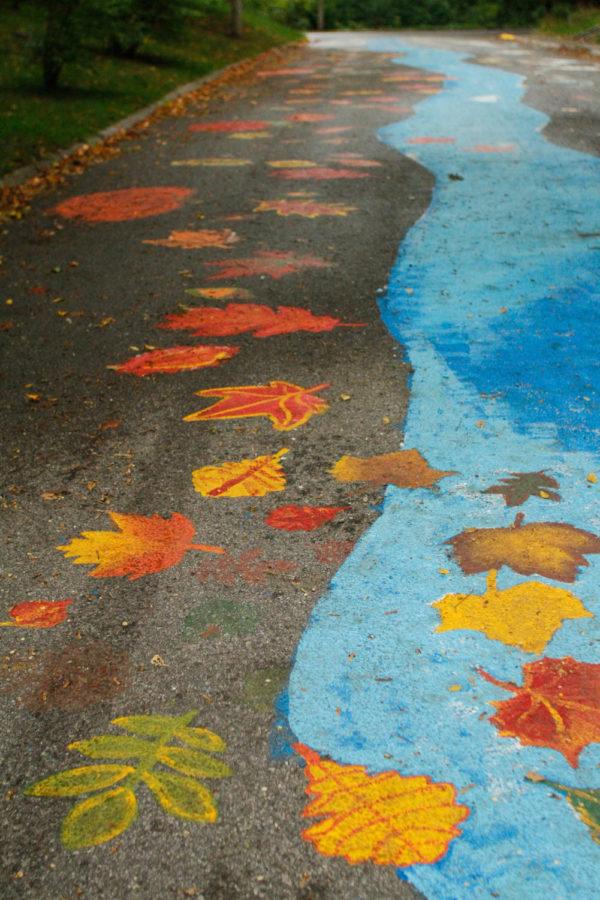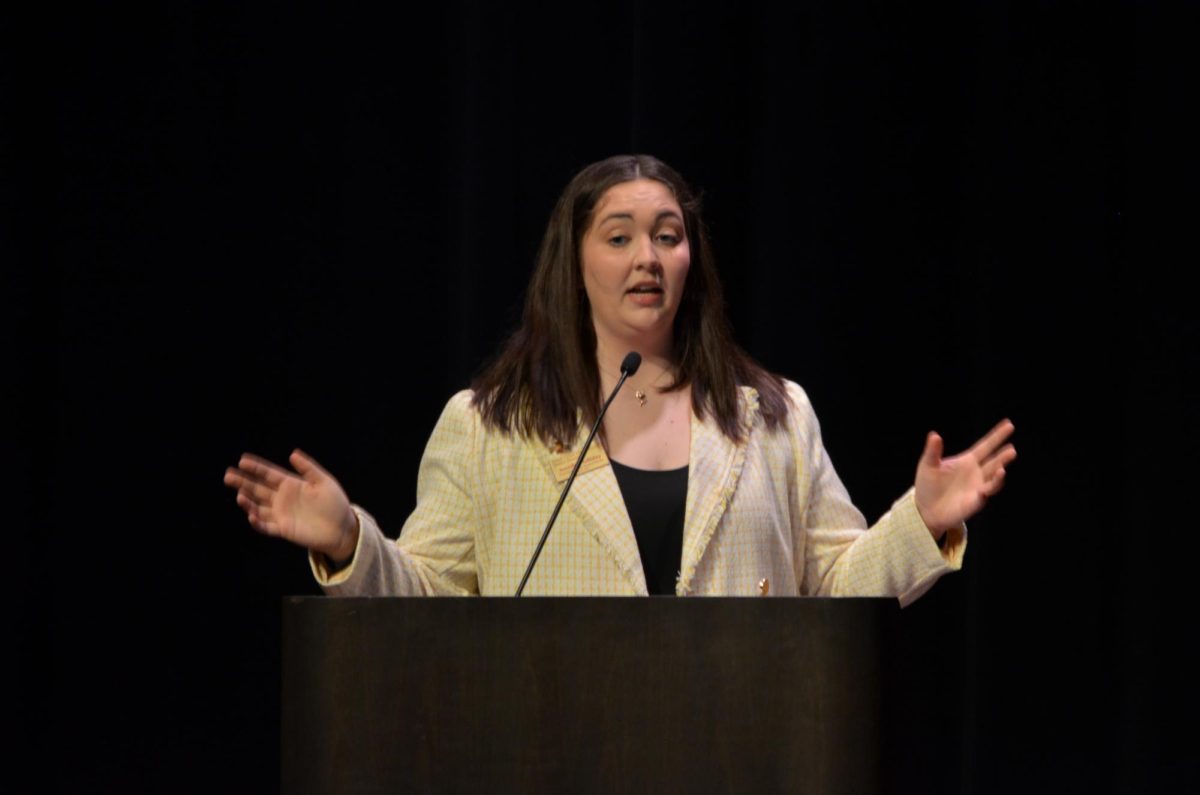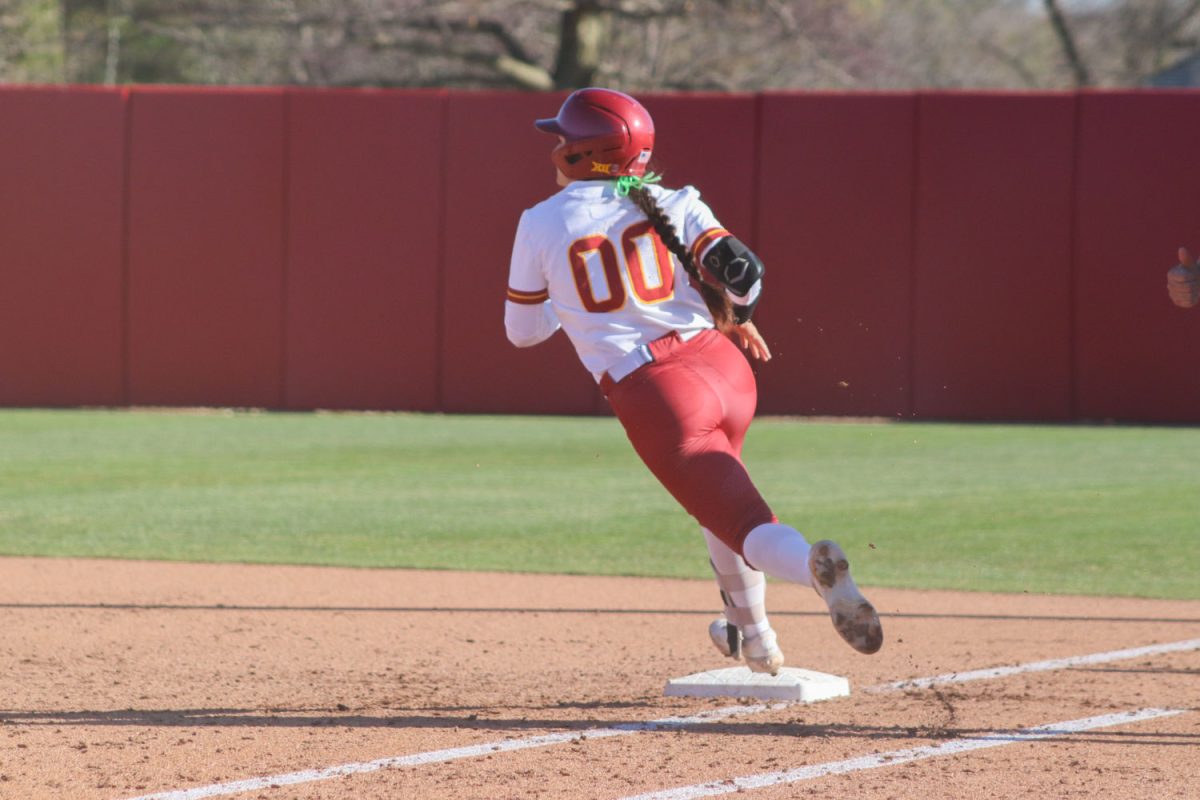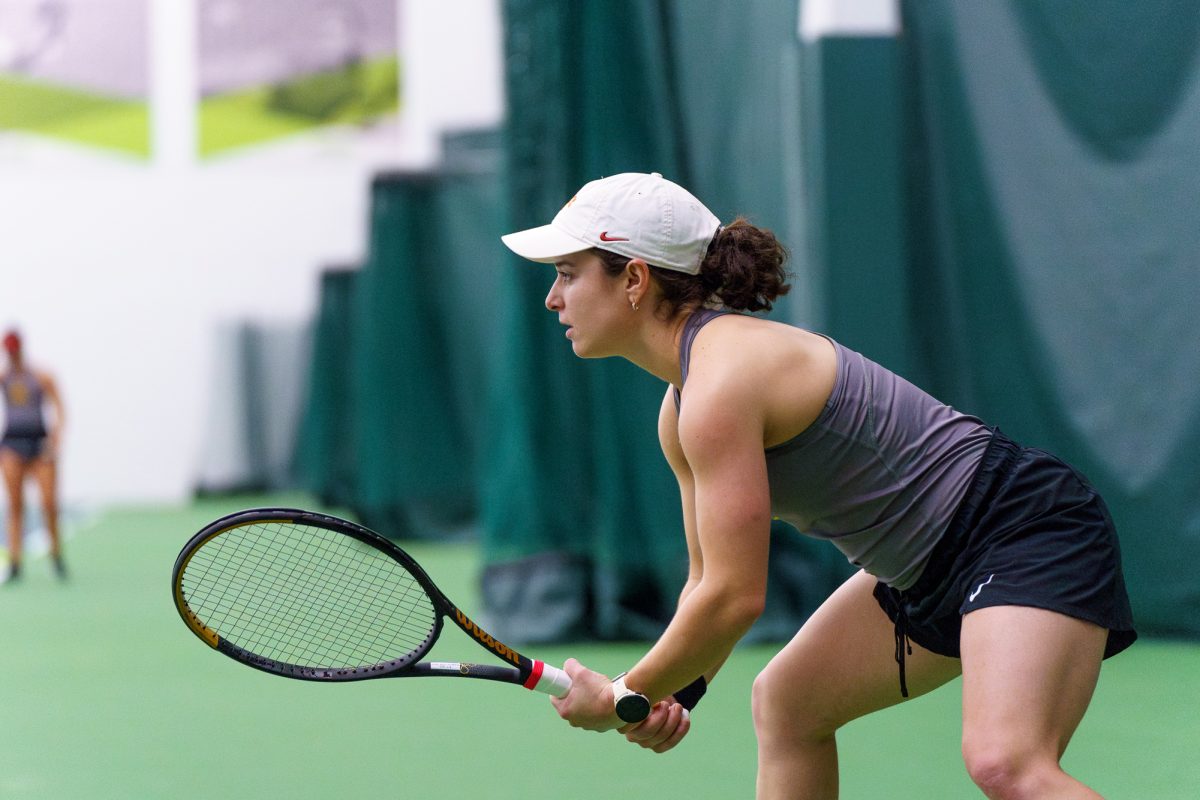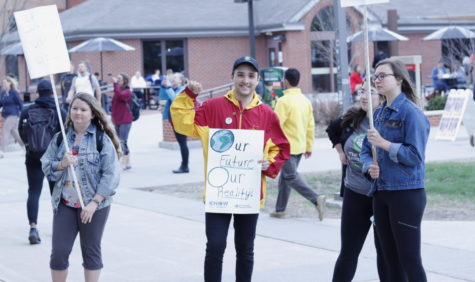ISU professor leads mural painting on Lee Street
October 7, 2013
Neighbors in the Brookside South community have banded together to add a little color to their neighborhood.
Barbara Caldwell, associate professor of integrated studio arts, designed the mural.
“I wanted to find a topic that people would be enthusiastic about,” Caldwell said. “They all liked nature.”
About 80 people of all ages participated in painting a mural on Lee Street, which features a river running down the middle of the street along with elements from the changing seasons surrounding the river. The east side of the mural begins with the summer season, transitions into autumn, winter and spring.
The neighbors of the Brookside South community gathered together on Sept. 21 to paint the mural on Lee Street, a short road near Brookside Park that connects Ridgewood and Brookside Avenue.
The idea for the mural initially began at the neighborhood’s annual 4th of July party in 2012. The next year’s celebration, hosted at Caldwell’s house, was where the drawing of the mural was presented.
In order to paint the mural, the project’s organizers had to accomplish two things: get approval from at least 80 percent of homes in the area and then apply for a grant from the city of Ames.
“We had 90 percent of the neighborhood approve,” said Sue Crull, retired associate professor of human development and family studies. “The only reason we didn’t get 100 percent is because the others weren’t home.”
Brookside South received a $1,530 neighborhood improvement grant from the city of Ames to complete the project.
Bob Bourne, former CyRide transit director, was a project organizer along with Caldwell and Crull. Bourne arranged for a street cleaner to clear away any leaves before the painting started to help make the project easier.
Caldwell painted the river on the street the night before the event, which took about four hours of work.
“After the first stroke, we knew we were committing,” Caldwell said.
Participants used almost 40 gallons of paint made especially for street painting to complete the mural, along with 108 paint brushes. Stencils were used for some of the painting, as well as some freehand drawing.
Painters were encouraged to add some creativity of their own to the mural. Many people added drawings of animals and other forms of nature that went along with the theme.
“It sort of evolved; there was spontaneity,” Caldwell said.
In order to ensure people from various backgrounds of art experiences could enjoy the community project, Caldwell and other project organizers had different kinds of stencils created. They also provided chalk for younger children to use on the sidewalk as others worked on the mural.
Caldwell said she believes the mural was about more than just improving the neighborhood: It was about the neighborhood coming together to complete the project.
“It was so magical when it all came together,” Caldwell said.

